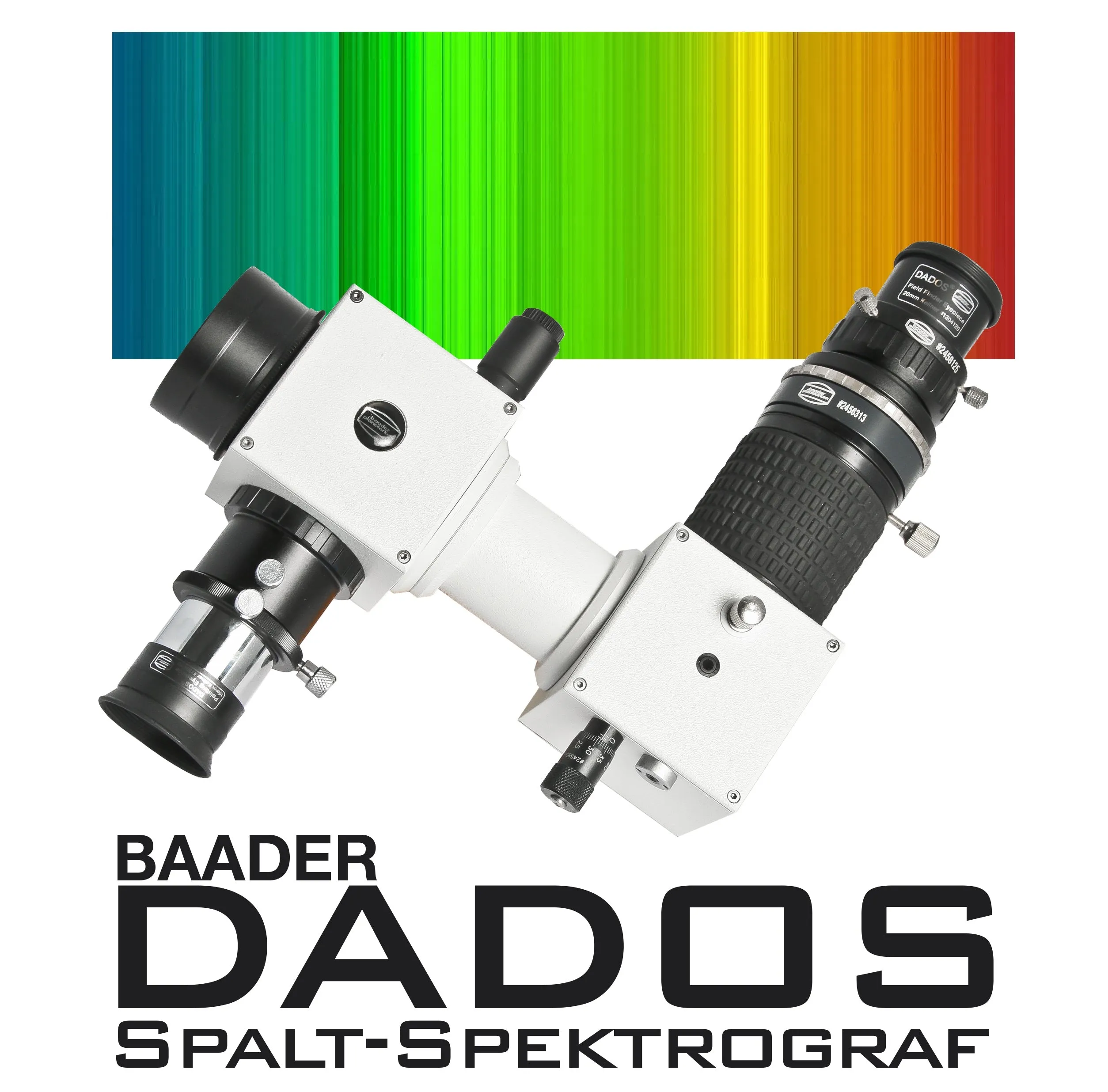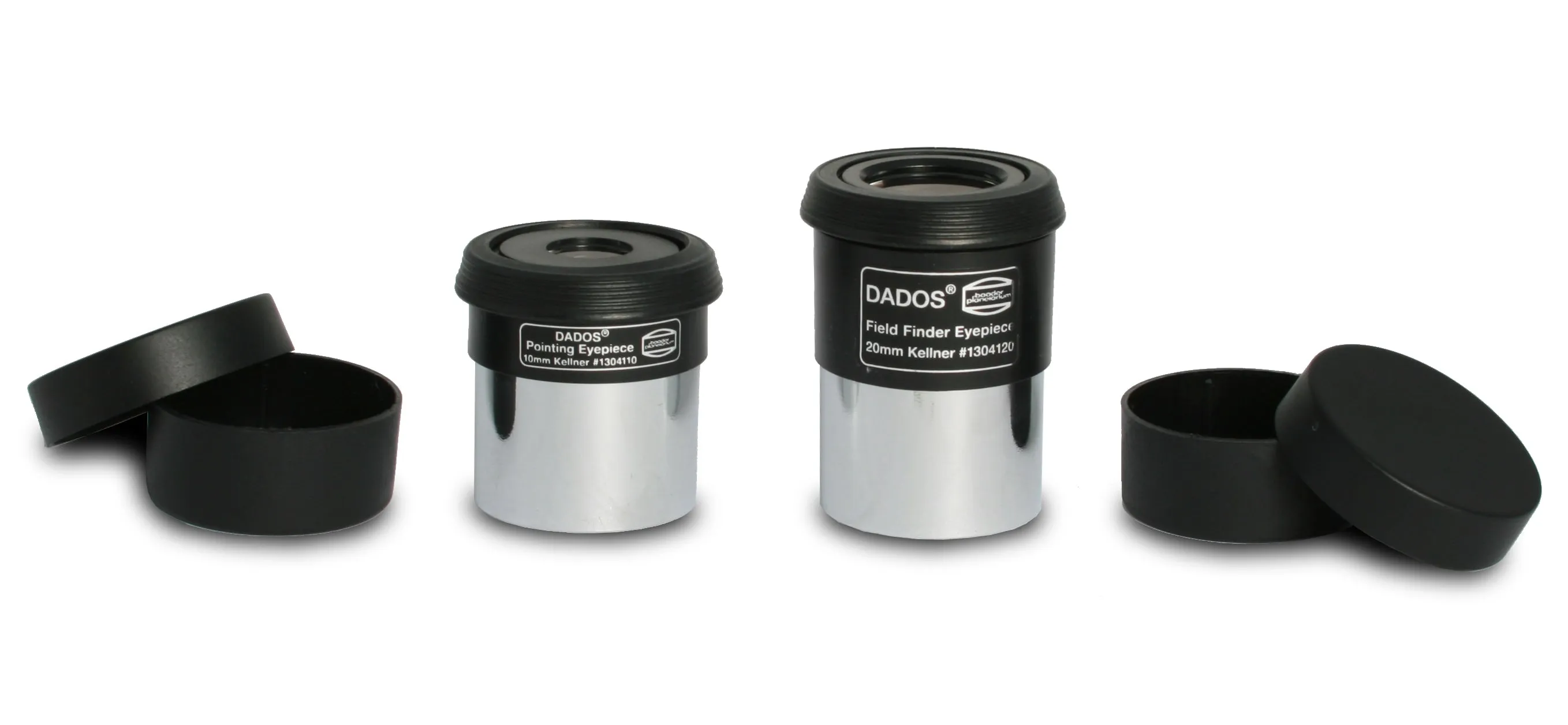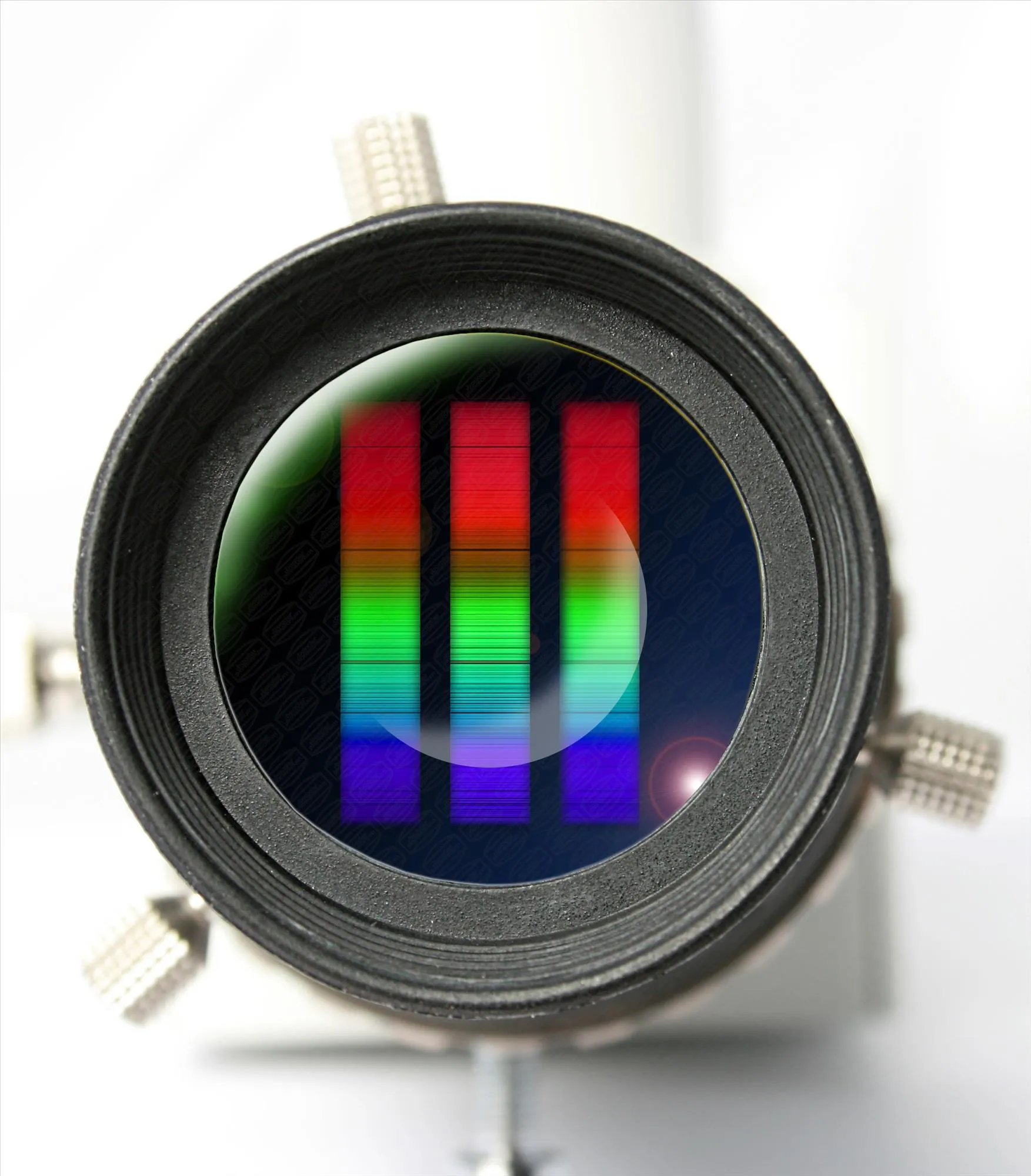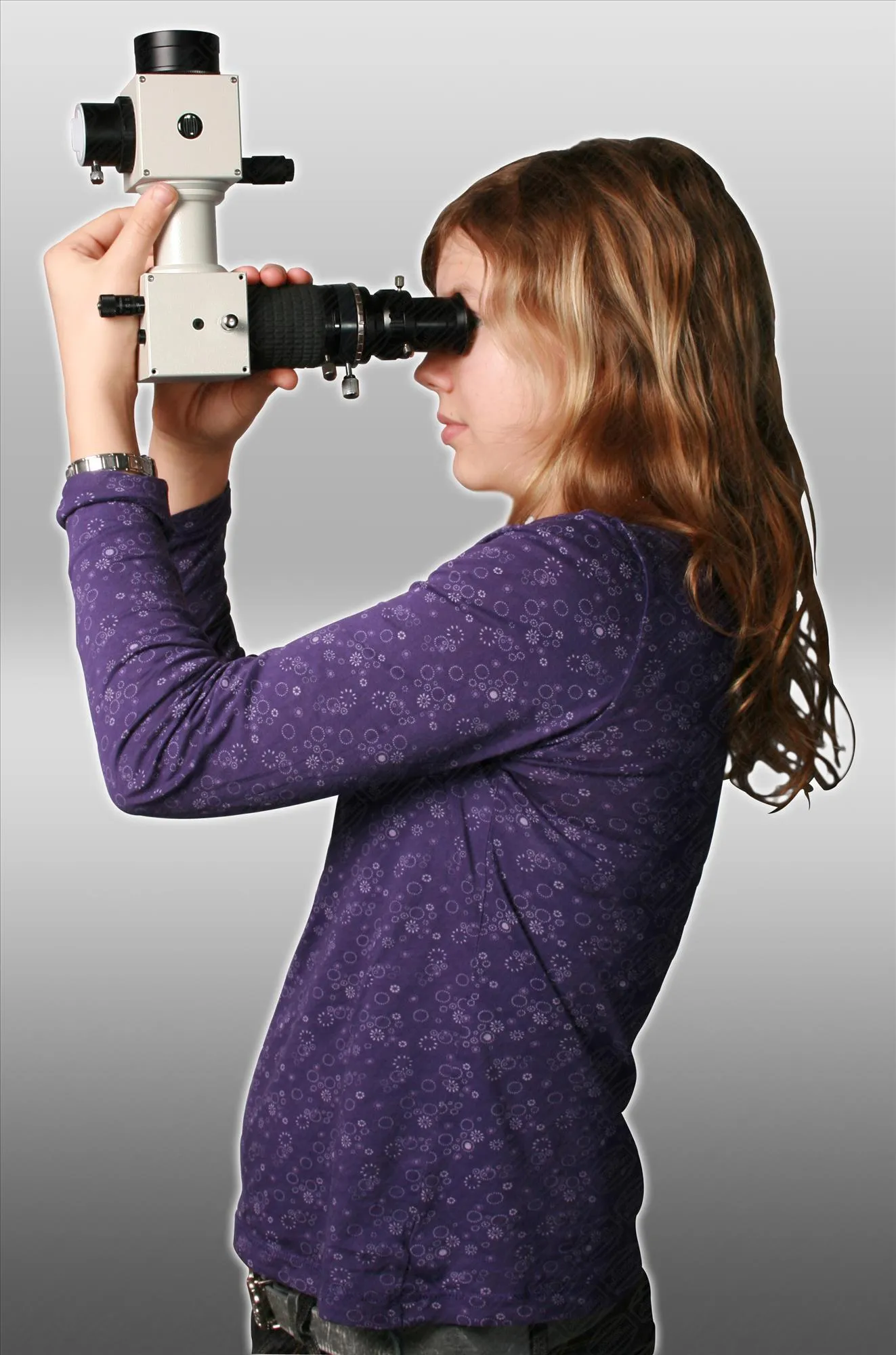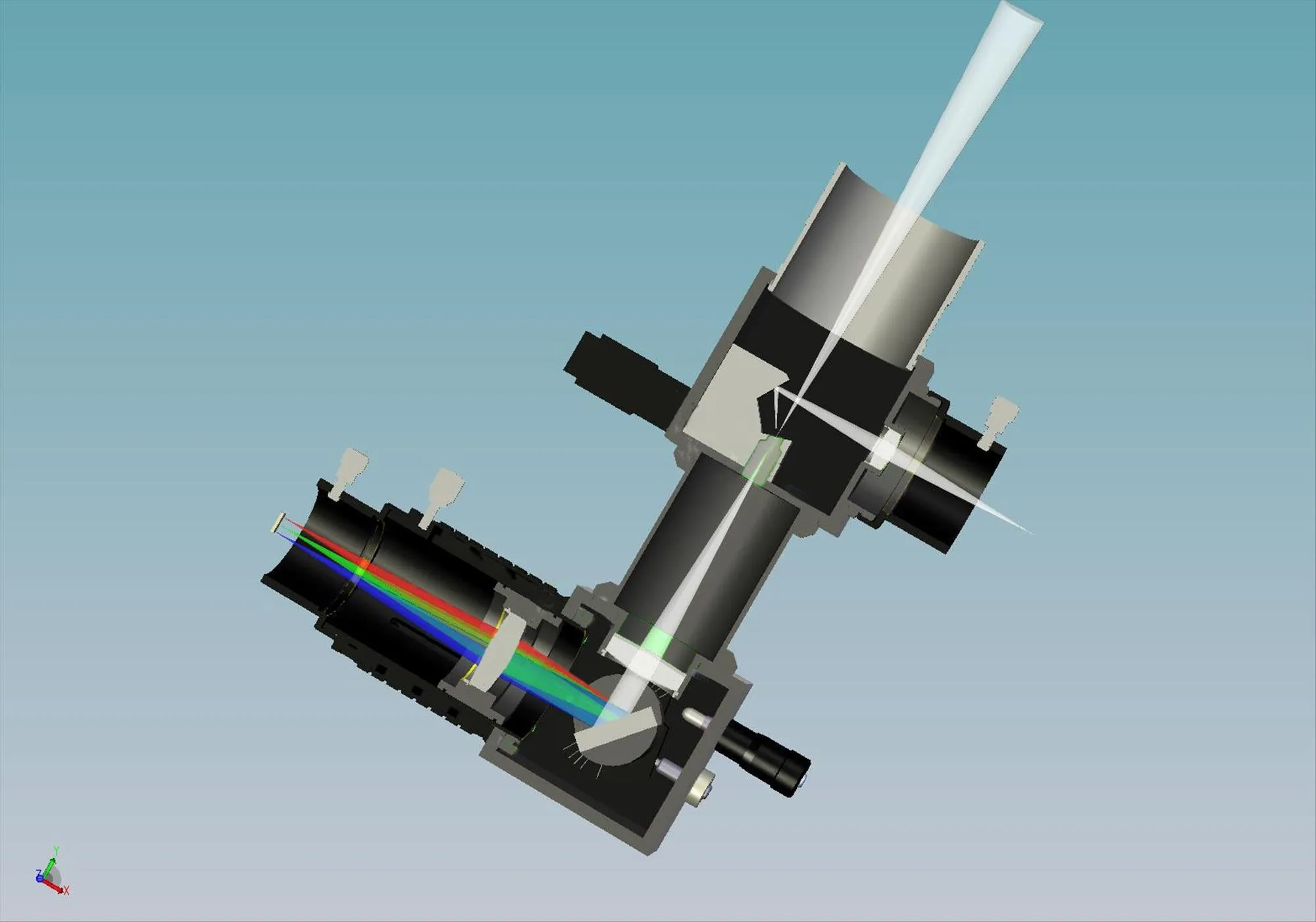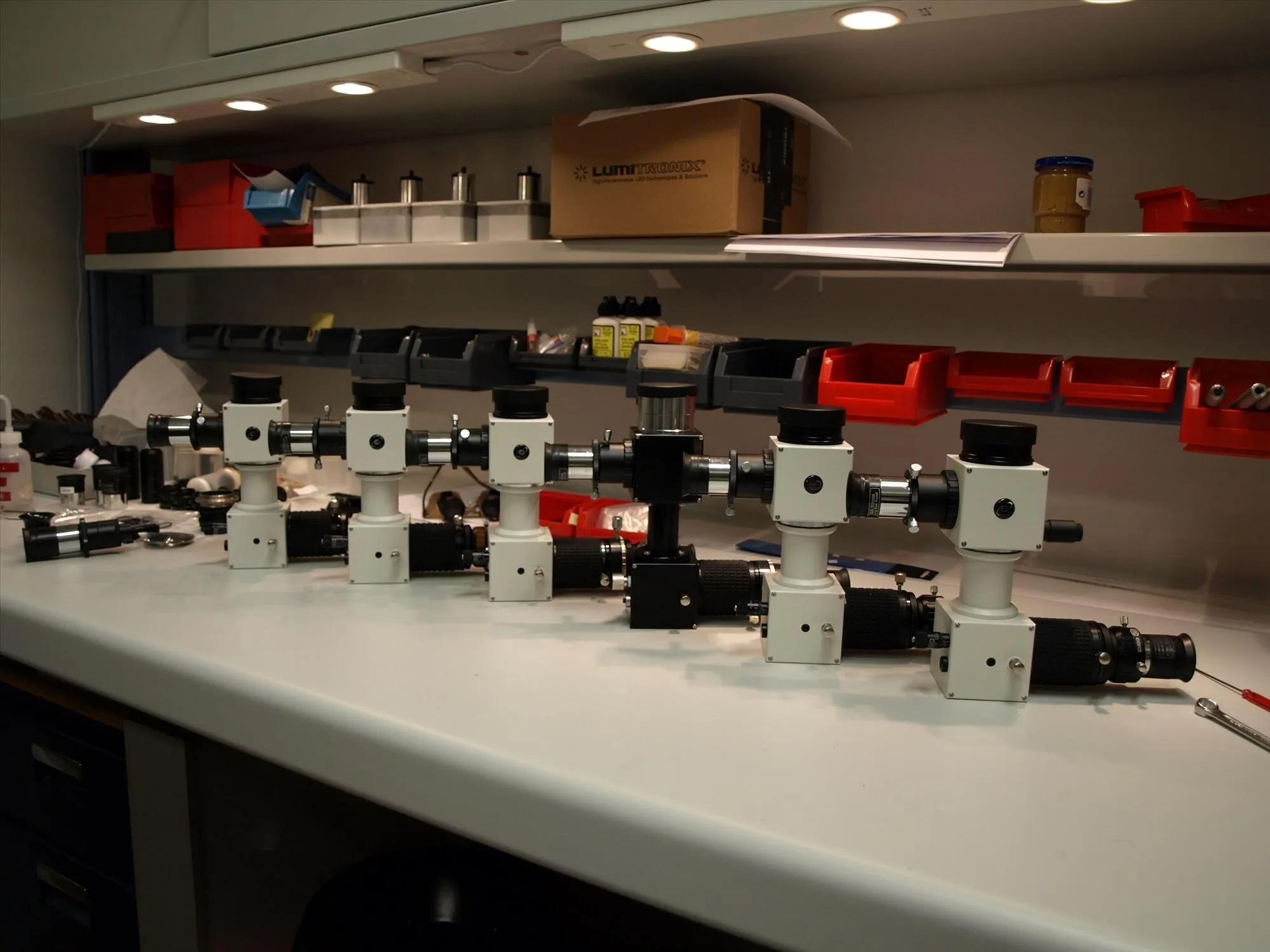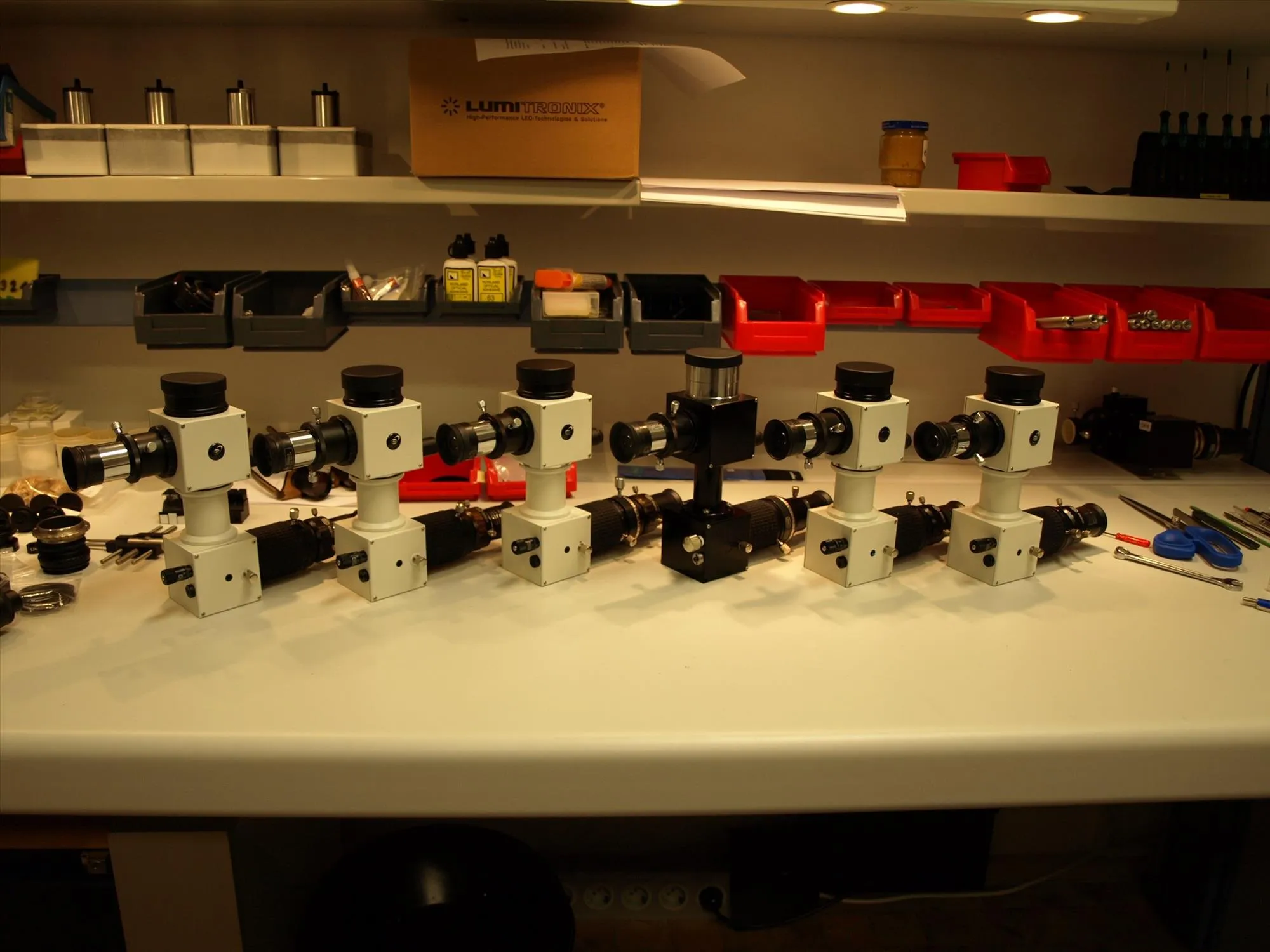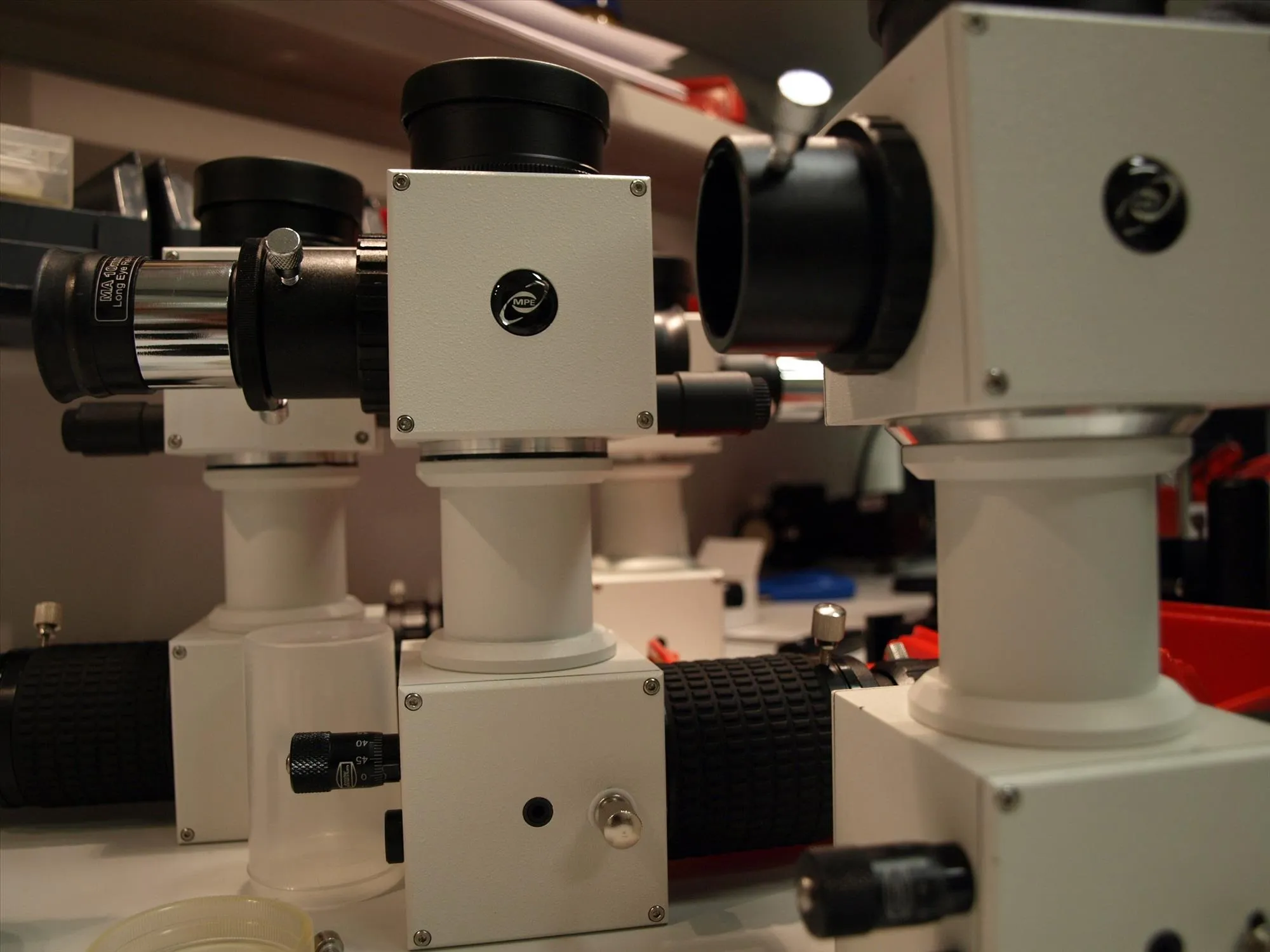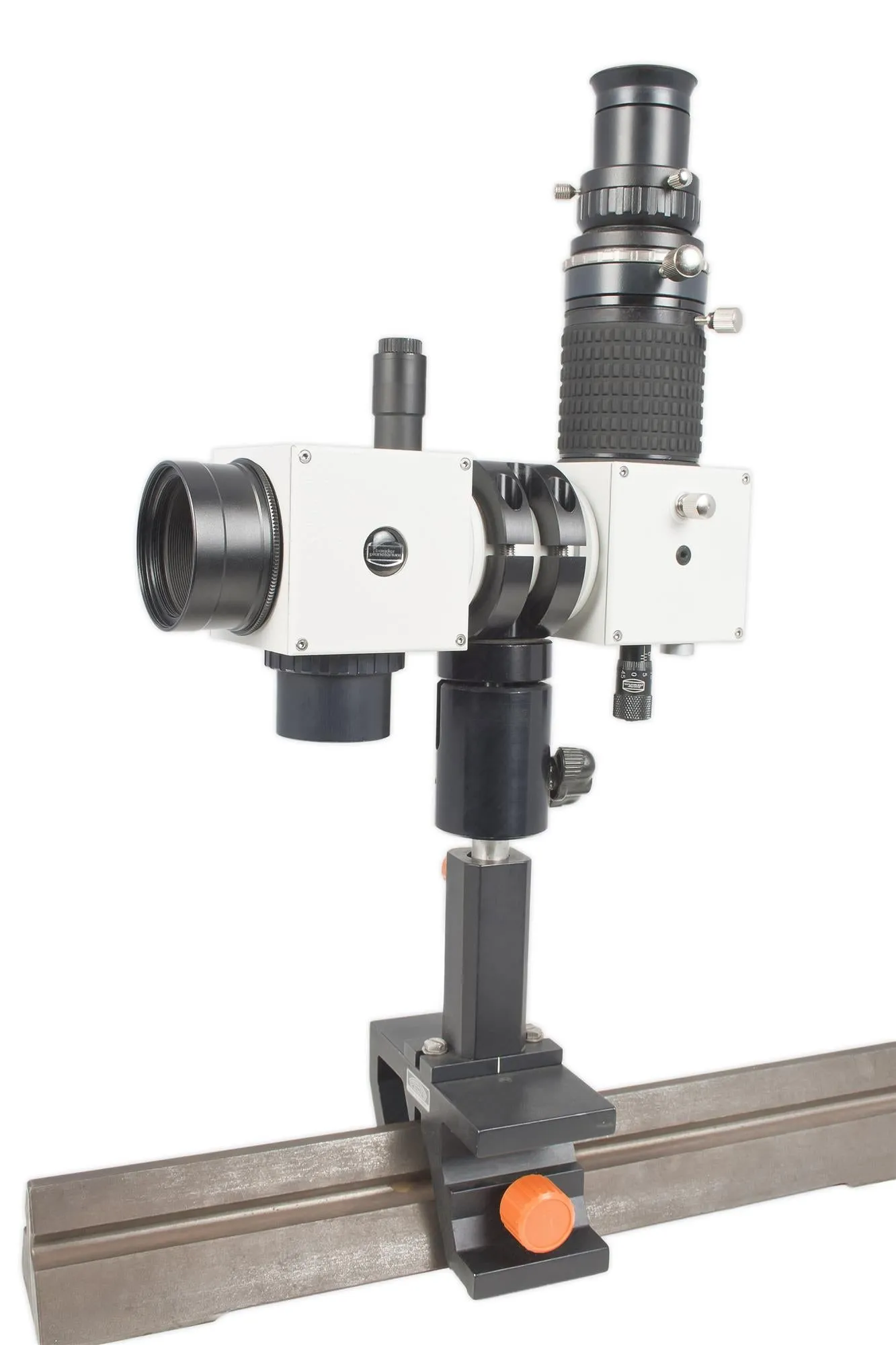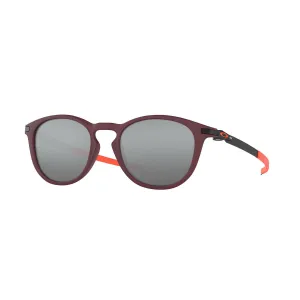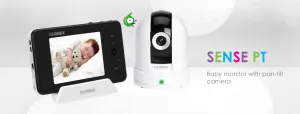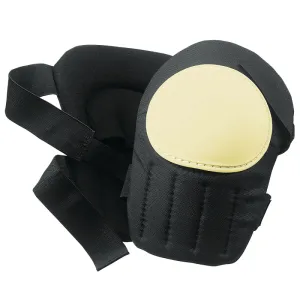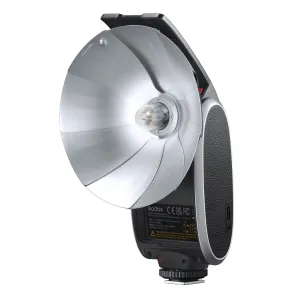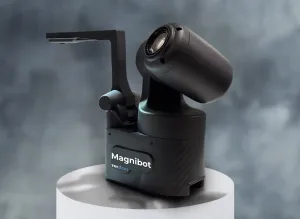Description
DADOS® - a slit spectrograph made by Baader
developed at the Max-Planck-Institute for Extraterrestrial Physics in Garching
The first draft of the DADOS®-slit spectrograph was based on our simple Blaze grating, which we had made for schools for more than 20 years. When we unveiled the prototype of the DADOS® some years ago, we listened closely to the following online-discussions, which lead to several large changes in the design of the product
So, many ideas and critics from active spectroscopists were incorporated in the design of the DADOS®. We are very grateful for all feedback, because we are sure that the final product has become much better because of this.
DADOS® is designed for telescopes with about f/10 or slower. Faster apertures will cause some vignetting. The spectral resolution is not affected by this in any way.
DADOS Slit Spectrograph – scope of delivery
- DADOS Reflection Grating with 200 lines / mm, cemented onto tilting grating holder
- DADOS 1¼" Eyepiece 20 mm Kellner # 1304120
- DADOS 1¼" Guiding Eyepiece 10 mm Kellner # 1304110
- T-2 Quickchanger # 2456313 # 2453620
- Focusing Ring Collar 1 1/4" # 1905131
- Focusing Eyepiece Holder 1¼" # 2458125
- Allen Key 1.3 mm and 1.5mm
- Slit-viewer unit
- Gloves
- Manual
DADOS Reflection Grating
Nowadays, we use the following three reflection gratings (200 L/mm as standard, 900 L/mm and 1200 L/mm sold separately) which are copies of special master gratings (they are no standard gratings from a catalogue!) - the Blaze angle of the gratings (as well as the optics, see below) is matched perfectly to the geometrical and optical properties of the DADOS®.
- #2458557 Reflection Grating with 200 lines/mm, cemented onto tilting grating holder
- #2458556 Reflection Grating with 900 lines/mm, cemented onto tilting grating holder
- #2458559 Reflection Grating with 1200 lines/mm, cemented onto tilting grating holder
The desired wavelength range can be set with a micrometer gauge. A sturdy T-2 connector for large CCD-cameras (e.g. SBIG) or several adaptations of eyepiece holders (as well a much larger "Backfocus") is included.
Other gratings with the common size of 25x25x6mm with more or less resolution can also be used with the DADOS®.
The efficiency of the DADOS® slit-spectrograph is at least 60% at 550 nm.
Properties of the specially designed gratings of the DADOS®
| Grating | Dispersion at 550 nm | spectral resolution lambda/delta lambda at 550 nm with the 3 slit diameters | spectral range covered | ||||
|---|---|---|---|---|---|---|---|
| lines/mm | nm/mm | nm/ 9 µm Pixel | 25 µm | 35 µm | 50 µm | ST-7/ST-402 | ST-8/ST-1603 |
| 200 | 47,61 | 0,443 | 543 | 388 | 272 | 328 | 656 |
| 900 | 12,67 | 0,114 | 3818 | 2727 | 1909 | 87 | 174 |
The second core element besides the gratings is the reflecting slit element with a precisely manufactured triple slit (with gap widths of 25/35/50µm). You can see all three slits at the same time and easily choose the right one for each object at a glance.
Because of the forward-reflecting slit element with razor-sharp, perfectly smooth edges and an additional, sophisticated optical system of tilted mirror and projection lenses, you can focus – just as with larger spectrographs – directly onto the image of the star with affordable, common CCD-guiding cameras or webcams (not inluded) or even with a guiding eyepiece and easily guide the telescope!
Guiding eyepieces
Two reasonably-priced 1¼" DADOS Kellner eyepieces with 10mm (#1304110) and 20mm (#1304120) focal length are included. They can be used for finding objects and for manual guiding without a guiding camera. A slit illumination (included in the scope of delivery) made of a dimmable red LED helps you to focus the guiding star and the slit itself. It illuminates the slit from the back towards the guiding camera/eyepiece, so that the LEDs light will not reach the lens of the collimator.
Lens system
The collimator system in front of/behind the Blaze grating is made of an achromatic and a triplet system. These were specially designed for the best-possible resolution and are coated with the best available anti-reflection-coating. These are no standard lenses from a catalogue!
The collimator lens can be moved over a wide range with a 2" Helical focuser very precisely, so that (almost) all known CCD- and DSLR-cameras (as well as almost all standard eyepieces) can be focused.
Adaptation and Mounting
On the telescope side, the DADOS® has got a black 2" nosepiece. You can attach an optionally available Neon-calibration lamp (#245 8590 - not included) with 2"-adaper and 220V cable to it.
If you remove the nosepiece, you can use the standard 2" SC female thread inside of the front part of the DADOS® for a variety of other adaptations. We have several adapters for a sturdy connection using this thread, e.g. a 2"/T-2 reducer (# 295 8242) to attach the DADOS® directly to optics with the standard T-2 photographic thread (M42x0.75).
You can also the female 2" thread of the front cube to screw the DADOS® without the nosepiese directly at a Schmidt-Cassegrain-telescope. Use our 2" Locking-Ring (#245 8270) to fix the DADOS® in any orientation - this way, you can even mount it between the fork arms of many Schmidt-Cassegrain with an alt-az mount. Both guiding and imaging camera are mounted in a 90°-angle towards the DADOS® to keep it as compact as possible.
To mount the DADOS® on a telescope or attach other accessories, a clamp with 3/8" and 1/4" thread (#245 8593) and 38mm diameter is available.
The two-piece clamp has got a 3/8" thread at the bottom side (a 1/4"-thread is included) and a 1/4" thread on top.
You can use it to mount the DADOS® on a ball-head or a tangent assembly as secondary unit. You absolutely need it in a classroom to mount the DADOS® on an optical bench or for any setup without a telescope.
There are plenty adapters available for all kinds of guiding cameras a well as for almost all imaging CCD-cameras – just take a look at our Astro T-2® accessories.
DADOS features
This user-friendly slit spectrograph, which was designed especially for use in schools or universities and for amateur observers, offers all features of a professional spectrograph. Especially remarkable are the following features:
- Two different reflection gratings and a specially designed optical system deliver a high light efficiency
- Micrometer gauge for precise adjusting of the grating
- In contrast to spectrographs without a slit, even large objects (nebulae, planets, comets) can be analyzed – just like in a professional observatory
- The spectral resolution (lambda/delta lambda ~ 500) makes a precise spectral classification of stars possible
- The complete visible and near infrared spectral range (350nm – 950nm) can be covered with a SBIG ST-7
- The slit is directly visible with an eyepiece or webcam, which makes it easy to center and guide a star
- The slit spectrograph can even be used at fast optics up to f/6.3, although a slight vignetting is visible at optics faster than ca. f/10
- Fits at standard 2" focusers
- Compact, can even be used if there is not much space
- The spectrum of brighter objects is directly visible in an eyepiece
- There are three slits side by side (25/35/50µm)
- The slits can be illuminated from the back with a red LED for easier focusing of a camera on the slit
- The spectra can be taken with web-, digital or CCD-cameras
- All cameras and eyepieces can be attached with our T-2® adapters
Specifications
| MANUFACTURER | Baader Planetarium |
|---|---|
| SKU (#) | 2458550 |
| EAN CODE | 4047825009142 |
| WEIGHT (NETTO) | 0.95 |
| USAGE | Perfect for visual and photographic use with or without a telescope. Suitable for amateur astronomers for private use and for spectroscopy education on schools and universities. |
| SPECTRAL RESOLUTION | with different reflection gratings: up to R = 5000 |
| OPTIMIZED SPECTRAL RANGE | 395-700nm tuneable (ca. 365 - 900nm with 200 L/mm reflection grating) |
| BREAK-EVEN VALUE | 200 L/mm: m = 8 mag. vis | 900 L/mm: m = 6 mag. vis (30cm-telescope S/N=50, 20min. exposure – see instruction manual) |
| MECHANICAL DESIGN | Blaze Grating Spectrograph with moveable and exchangable reflection gratings |
| FIELD SIZE | optimized for sensor sizes: ca. 13x18mm, usable from 6.9 x 4.3 mm (ST-402, ST-1603, STF-8300M, DSLR, ...) |
| ÖFFNUNGSVERHÄLTNIS DES KOLLIMATORS | f/10 |
| OPTIMIZED FOR FOCAL RATIO | f/10 telescopes |
| ADAPTABLE TO | DSLR-, CCD- and Video-cameras |
| SLIT SIZE | Multi-slit plat with three slits 25, 35 and 50μm |
| ILLUMINATION | manual red LED for Slit-Focusing |
| SPECIAL FEATURES | 110-page tutorial. Flip-Mirror with callibration unit under preparation |
| GUIDING PORT | with 1¼"-connection for eyepieces, video- and guiding cameras |
| INCLUDED ACCESSORIES | DADOS, reflection grating 200 L/mm, 10mm and 20mm eyepiece |
Downloads
Instructions Manuals
Student Papers and Thesis
Test Reviews




